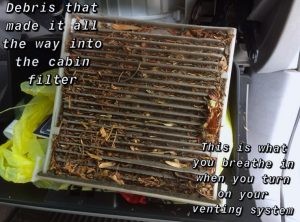Keeping your car clean is not just about aesthetics; it’s about maintaining its health and longevity. While many car owners diligently clean the interior and exterior, the area under the hood, particularly the cowl, often gets overlooked. However, cleaning the cowl part of your car is crucial and offers benefits that extend far beyond just appearances. A clean cowl can significantly contribute to your car’s lifespan and prevent a range of mechanical and electrical issues, including leaks. This guide will explain the importance of a clean car cowl and provide you with a simple step-by-step method to clean it effectively.
Understanding the Cowl and Its Importance
The cowl is the panel located at the base of your windshield, nestled between the hood and the windshield itself. This seemingly inconspicuous part plays a vital role in your car’s functionality. It serves as a support structure for both the windshield and the dashboard, while also acting as a protective barrier for critical components underneath. Specifically, the cowl is designed to prevent debris, water, and other unwanted elements from entering the windshield wiper system and the cabin air intake, which is often located within the cowl area.
Over time, cowls can become easily clogged, especially if you frequently park your car outdoors, particularly during seasons like fall when leaves and debris are abundant. Leaves, acorns, twigs, and other materials can accumulate in the cowl area, leading to several problems. Most car cowls are equipped with drains designed to channel rainwater away from the cabin and engine bay, typically directing it behind the front wheels. However, when these cowl drains become blocked by debris, rainwater can back up and potentially flood into the passenger compartment, soaking the car floor and causing significant water damage.
Furthermore, neglecting to clean your car’s cowl can lead to debris accumulating near and even under the fuse box, which is often located in the vicinity of the cowl. This can cause significant damage to your car’s electrical system, potentially leading to costly repairs. Another common issue arising from a dirty cowl is the development of mold and mildew in the cabin air filter area. Trapped moisture and decaying organic matter create an ideal breeding ground for these allergens, which can then circulate through your car’s ventilation system, producing unpleasant odors and potentially impacting air quality inside your vehicle.
Beyond leaves and general debris, another significant threat to your car’s cowl area, particularly during colder months, comes from rodents. As temperatures drop, mice and other small animals seek warm, sheltered places to nest. The cowl area of a car, being relatively protected and often near the engine bay’s residual heat, can become an attractive haven for these creatures. Compounding this issue is the automotive industry’s shift towards using soy-based wiring insulation. While environmentally friendlier and cost-effective, soy-based wiring is unfortunately attractive to rodents.
Unlike older rubber or vinyl-based wiring, soy-based coatings are palatable to rodents, encouraging them to chew on wires and even build nests within the cowl and plenum areas. Rodent damage to wiring insulation can lead to short circuits and extensive damage to your car’s electrical system, resulting in potentially expensive repairs.
Simple Steps to Clean Your Car Cowl
Fortunately, cleaning your car’s cowl is a straightforward process that you can easily perform at home with a few basic tools. Regular cowl cleaning, especially before and after fall and winter seasons, can save you from potential headaches and costly repairs.
Here’s a step-by-step guide to effectively clean your car cowl:
- Manual Debris Removal: Begin by manually removing larger debris such as leaves, twigs, acorns, and any other visible objects from the cowl area. Wearing gloves can be helpful for this step.
- Air Cleaning: Use a leaf blower or compressed air to dislodge and remove smaller debris particles. Direct the airflow into the cowl vents, cowl drains, and air ducts to ensure thorough cleaning of these areas. Pay attention to corners and crevices where debris tends to accumulate. Don’t forget to blow out the grille, fenders, and the areas around the hood as well, as these can also collect dirt and debris that could migrate to the cowl.
- Water Rinse (If Necessary): If you still notice stubborn dirt or debris after using air, gently use a hose to rinse the cowl area. The water will help to flush out any remaining dirt and should drain out through the cowl drains, exiting in front of your car’s front tires. Avoid using high-pressure water directly into sensitive areas, and ensure proper drainage to prevent water from pooling.
By routinely checking and cleaning your car’s cowl, especially during fall when leaves are falling and as temperatures drop attracting rodents, you can prevent significant damage and maintain your vehicle’s health. Incorporating cowl cleaning into your regular car maintenance routine is a simple yet effective way to protect your investment and avoid unexpected repair bills. For comprehensive car maintenance, including cowl cleaning and vacuuming, schedule an appointment with a trusted service like Luke’s Auto Service in Essex County.
